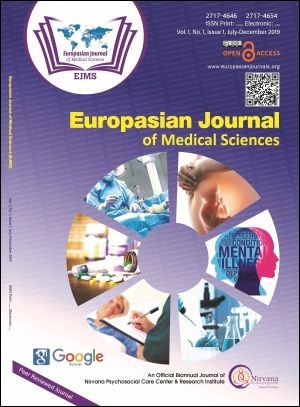Thrombocytopenia as a Predictor of Severity of Pneumonia in a Tertiary Care Center in Nepal
Keywords:
Nepal, Platelet Count, Pneumonia, thrombocytopeniaAbstract
Introduction: Community-acquired pneumonia is an infectious disease with a global burden. Thrombocytopenia can be an effective and inexpensive tool in predicting the severity of pneumonia which can be useful in the primary care level. The objectives were to identify the clinical and laboratory predictors of hospitalized patients with pneumonia, determine the incidence of thrombocytopenia in those patients, its association with severity, compare it with leucocyte count, assess severity using clinical prediction scores, need of mechanical ventilation, need of transfer to intensive care unit and mortality.
Methods: This was a prospective observational study conducted at Tribhuvan University Teaching Hospital, Kathmandu, Nepal with a sample size of 111. After informed consent, diagnosed and admitted cases of community-acquired pneumonia were examined after which patients’ demographic and clinical data, as well as laboratory parameters including white cell count and platelets, were filled in proforma. Clinical prediction scores for pneumonia were calculated and the need for mechanical ventilation, inotropes, transfusions as well as mortality assessed. Patients were followed up until discharge to see the severity of pneumonia.
Results: The incidence of thrombocytopenia among patients with pneumonia was 36.9% (41 out of 111). The overall mortality rate was 9%. More pneumonia patients having thrombocytopenia (14.6%) died than pneumonia patients having leukocytosis (13.8%). There was a significant association between thrombocytopenia and severity of pneumonia, both alone, (p = 0.007, OR = 4.03) and on adjusting for the WBC and GCS (p=0.017, OR=3.81). Significant associations were found between thrombocytopenia and the need for ICU in patients with pneumonia (p=0.001), mechanical ventilation (p = 0.001), presence of edema, confusion, age variation (p=0.024) and septic shock (p=0.021).
Conclusions: Thrombocytopenia is associated with severity in patients hospitalized with community-acquired pneumonia. Thrombocytopenia is an effective predictor of the severity of pneumonia.
Downloads
Downloads
Published
How to Cite
Issue
Section
License
The author(s) retain the ownership of the copyrights for their work published in EJMS without any restrictions. Upon submission, the author(s) grants EJMS a license to publish, including to display, store, copy, and reuse the published content.
License to Publish
By submitting a manuscript to EJMS, the author(s) grant the journal a non-exclusive license to:
- Publish and distribute the content in all formats, media, and platforms (both existing and future), while identifying EJMS as the original publisher.
- Reproduce, display, and store the content in both print and online formats, including institutional and digital repositories.
- Translate, adapt, and summarize the work, including reprints, extracts, and abstracts.
- Develop derivative works based on the original content.
- Include the work in electronic databases and provide links to third-party materials.
Creative Commons Licensing
In addition to EJMS’s publishing rights, authors grant third parties the right to use, share, and distribute their work under the Creative Commons Attribution 4.0 (CC BY 4.0) International License. This allows unrestricted use of the content, provided proper attribution is given to the original author(s) and the journal.

